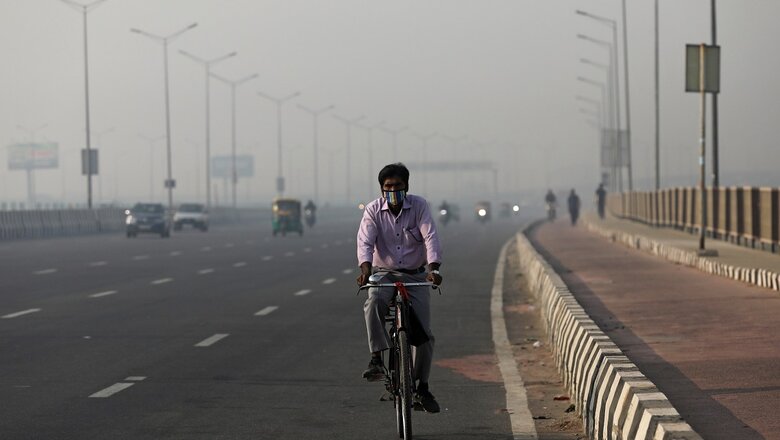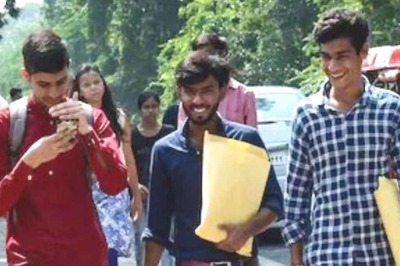
views
Pollution levels across Delhi NCR remained ‘very poor’ on Friday, inching close to the severe category. The Air Quality Index of the capital at 2.00 PM stood at 401, which is ‘severe’ category.
While most areas of Delhi like Anand Vihar, Narela, Bawana, Mundka and Vivek Vihar recorded severe air quality on Friday, the satellite towns too were not immune to the hazardous air category. Noida, Ghaziabad, Greater Noida, Faridabad and Gurugram remained choked as well.
The AQI (Air Quality Index) contaminated to the season’s worst on Thursday when Delhi recorded an overall AQI of 450 in the severe category, the worst AQI recorded after November 2019. Among the factors responsible for the exponential rise in PM 2.5 and PM 10 levels, unfavorable meteorological conditions too catalysed the deterioration. Low wind speeds, coupled with dip in temperature and the anti cyclonic movement of air resulting in a phenomenon called subsidence.
Kuldeep Shrivastava, Indian Meteorological Department regional head, told News18 that the condition might improve marginally after 10th.
“Winds remained calm on Wednesday and Thursday not allowing the pollutants to disperse resulting in the hazardous level of PM concentration. The anti cyclonic movement of wind pushed the winds close to the ground accumulating the pollutants close to the ground. This downward parcel of air close to the surface as it cools and becomes denser is known as subsidence. Also, wind direction is North Westerly which means the smoke laden winds are coming from Punjab and Haryana towards Delhi. The direction will change to easterly after 10th, when we can expect a marginal sight of relief,” he said.
Delhi becomes a virtual gas chamber every winter season because of high PM 2.5 and PM 10 concentrations attributed to a number of factors including stubble burning, unfavorable meteorological conditions and pollution from local sources.
Read all the Latest News, Breaking News and Coronavirus News here




















Comments
0 comment